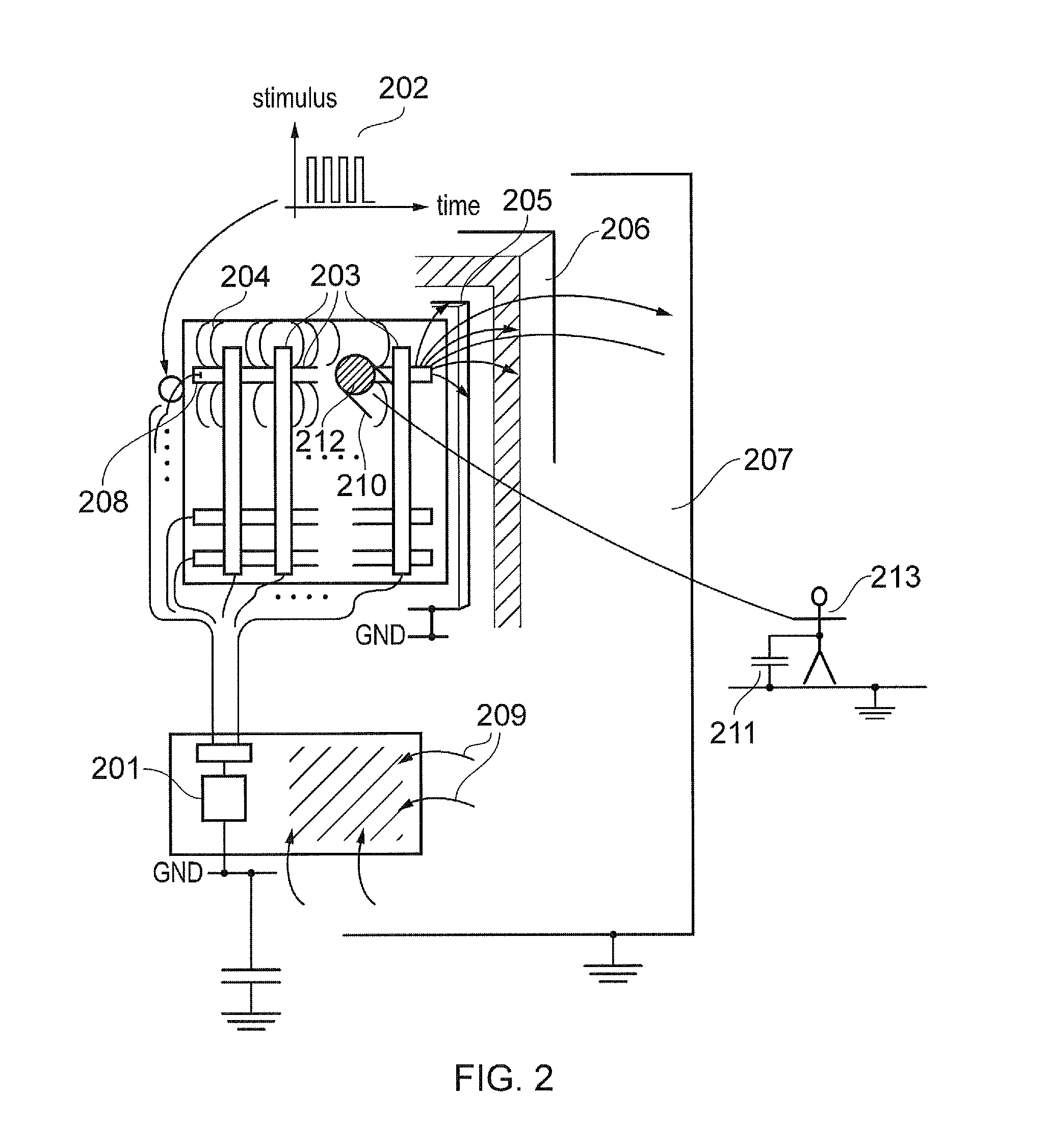Touch sensors and touch sensing methods
- Summary
- Abstract
- Description
- Claims
- Application Information
AI Technical Summary
Benefits of technology
Problems solved by technology
Method used
Image
Examples
Embodiment Construction
[0047]In touch-sensor applications there is often a desire to provide a sensing surface that which is as large as possible within a defined space. For example, there is often a desire for a large touch-sensitive surface to be provided within a relatively compact device, such as a handheld computer / tablet or mobile phone, for example. However, with established techniques there is generally a requirement for a “dead” region surrounding a touch sensitive surface that is needed for routing electrical connections to the various electrodes comprising the sensing surface. For example, for the conventional sensor schematically represented in FIG. 3 there is a need for traces to run down the left-hand side of the sensing surface to connect to the horizontally-aligned electrodes. This restricts the extent to which the sensor can extend across the full width of a device in which it is incorporated. Because of this there can be a desire to simplify the manner in which electrical connections can...
PUM
 Login to view more
Login to view more Abstract
Description
Claims
Application Information
 Login to view more
Login to view more - R&D Engineer
- R&D Manager
- IP Professional
- Industry Leading Data Capabilities
- Powerful AI technology
- Patent DNA Extraction
Browse by: Latest US Patents, China's latest patents, Technical Efficacy Thesaurus, Application Domain, Technology Topic.
© 2024 PatSnap. All rights reserved.Legal|Privacy policy|Modern Slavery Act Transparency Statement|Sitemap



